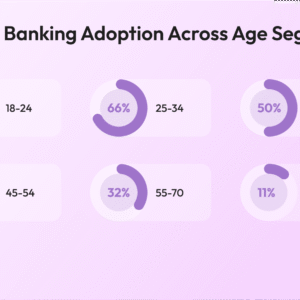
Cloud pros still believe these three multi-cloud myths
Despite its ten-year existence, cloud computing is still a nebulous concept. There are many rumors, myths, and misconceptions regarding technology. Businesses and IT professionals are confused about security concerns and deployment models, making it difficult for them to pursue the cloud and avail themselves of its benefits.
Data centers of the 21st century will only become more important as the cloud continues to grow in importance.
There is a wide variety of cloud-based services available to businesses, small and large alike. QuickBook online, Office 365, and Salesforce are examples of cloud-based services that offer comparatively inexpensive productivity apps.

In organizations that share information about multi-cloud, we frequently hear false information about it in the press, at meetings, in training, and in podcasts. People don’t intend to mislead; they just don’t understand what’s true and what’s not, based on their multi-cloud experiences.
Here are three myths about multi cloud that most businesses encounter that needs to be dispelled:
1. There Is Less Security in the Cloud than On-Premise
Every IT environment has security concerns. It is not something that should be taken lightly, but there are two factors that perpetuate the myth that the cloud is not secure.
As you know, cloud deployments are typically hosted on non-prem hardware, which is difficult to access. As well, public cloud deployments share hardware between multiple organizations.
Firstly, many data centers, both colocated and cloud-based, provide some basic maintenance services for the hardware that houses your data. Any other maintenance for the applications and virtual machines can often be handled remotely.
A public cloud provider’s reputation depends on the security of the data stored on their platform. If a public cloud provider’s security has been compromised on a regular basis, their clients will leave. Plus, you can deploy bullet proof methods to gain more security in your cloud setup.
2. Maintaining and securing your cloud is not necessary
On the other hand, there is a myth claiming that when you use the cloud, you never have to maintain your data. This is almost never true, but it varies from cloud to cloud.
In most cases, clients believe that since their data, virtual machines, and applications reside in the data center of their provider, it is their responsibility to maintain the environment. However, this is only half the story.
Typically, cloud providers will maintain the hardware, but not the software that runs on it. The client is responsible for maintaining their own virtual machine.
Any cloud provider that provides you with hardware, heating, and cooling to power your applications is obligated to do so. Anything beyond that is up to you. This is not the case with all cloud providers.
Ensure you understand how your security and maintenance are handled by your provider.
3. There is no halfway house when it comes to cloud migration
A team that believes cloud migration has to include all data, or none at all, will almost certainly stop talking about it immediately. If the team believes cloud migration must include all data, the migration cost can seem prohibitive despite the significant savings.
Cloud deployment can take a variety of shapes and sizes, and many environments only migrate one part of their infrastructure at a time. Public cloud isn’t a viable option for everyone. A SolarWinds.com survey found that 60% of companies cannot fully migrate to the cloud because most of the cloud migrations such as Office 365 Cloud to Cloud Migration and SharePoint Data Migration are complex and require continuous monitoring throughout the migration process and no third part migration tools can do it.
Furthermore, you should not overlook the benefits of private and hybrid clouds. They can be just as beneficial as public clouds. You can choose which parts of the data center will be shared between other users and which will remain private in a hybrid cloud deployment. In a private cloud deployment, the data center will be your own private data center.
4. Cloud computing is not for small business
In fact, this myth could not be further from the truth. All sizes of organizations can take advantage of the cloud. For example, if your business can save on running, maintaining, and updating fewer servers in your data center, the cloud offers at least some benefit.
Small and medium businesses are marking contracts with significant cloud providers. There are actual financial benefits to them. We live in a digital world, and if you want to compete in modern business, you will need some computing power.
Small businesses can benefit from public cloud services without having to invest in building in-house data centers.
5. Lock-in will be prevented by multicloud
In order to avoid being too dependent on any single vendor, organizations often start with one cloud provider but eventually contemplate the use of another. Multicloud can also be defined on a functional basis.
IT leaders are concerned about lock-in, they should focus more on solving the problem more, rather than simply incorporating multi cloud into the cloud strategy.
6. The public cloud is being reclaimed by enterprises
Legacy vendors are most likely to benefit from the myth that workloads are being repatriated from the cloud, since this would make them more profitable.
The reality is most enterprises have not migrated workloads from the cloud back to the data center. Of the ones that have, most came from cloud SaaS, colocations and outsourcers. That does not mean every move to the cloud is successfully accomplished.
The strategy of addressing problems as they arise instead of abandoning the cloud and moving applications back to their original locations is more likely to succeed.
Bottom Line!
Some of the myths that preceded cloud computing continue to haunt it today. These myths can slow enterprises down, hinder innovation and cause them to fear cloud computing. Cloud computing has evolved significantly in the last five years, but some of the myths that persisted throughout its beginnings persist today. Yet, as clarified above, there is no need to worry about such misconceptions as cloud computing is a powerful technology that can amplify your work and sales, if used correctly.
Author Profile
- I am the owner of the blog readree.com. My love for technology began at a young age, and I have been exploring every nook and cranny of it for the past eight years. In that time, I have learned an immense amount about the internet world, technology, Smartphones, Computers, Funny Tricks, and how to use the internet to solve common problems faced by people in their day-to-day lives. Through this blog, I aim to share all that I have learned with my readers so that they can benefit from it too. Connect with me : Sabinbaniya2002@gmail.com
Latest entries
 ArticleOctober 23, 2025How to Use Rotating Residential Proxies
ArticleOctober 23, 2025How to Use Rotating Residential Proxies ArticleOctober 19, 2025Why You Should Use Geo-Targeted Proxies for Web Scraping
ArticleOctober 19, 2025Why You Should Use Geo-Targeted Proxies for Web Scraping SoftwareOctober 15, 2025The Importance of Cyber Security in a Digitally Connected World
SoftwareOctober 15, 2025The Importance of Cyber Security in a Digitally Connected World BlogOctober 8, 2025The Most Recent Trends in Generative AI in the Banking Industry
BlogOctober 8, 2025The Most Recent Trends in Generative AI in the Banking Industry